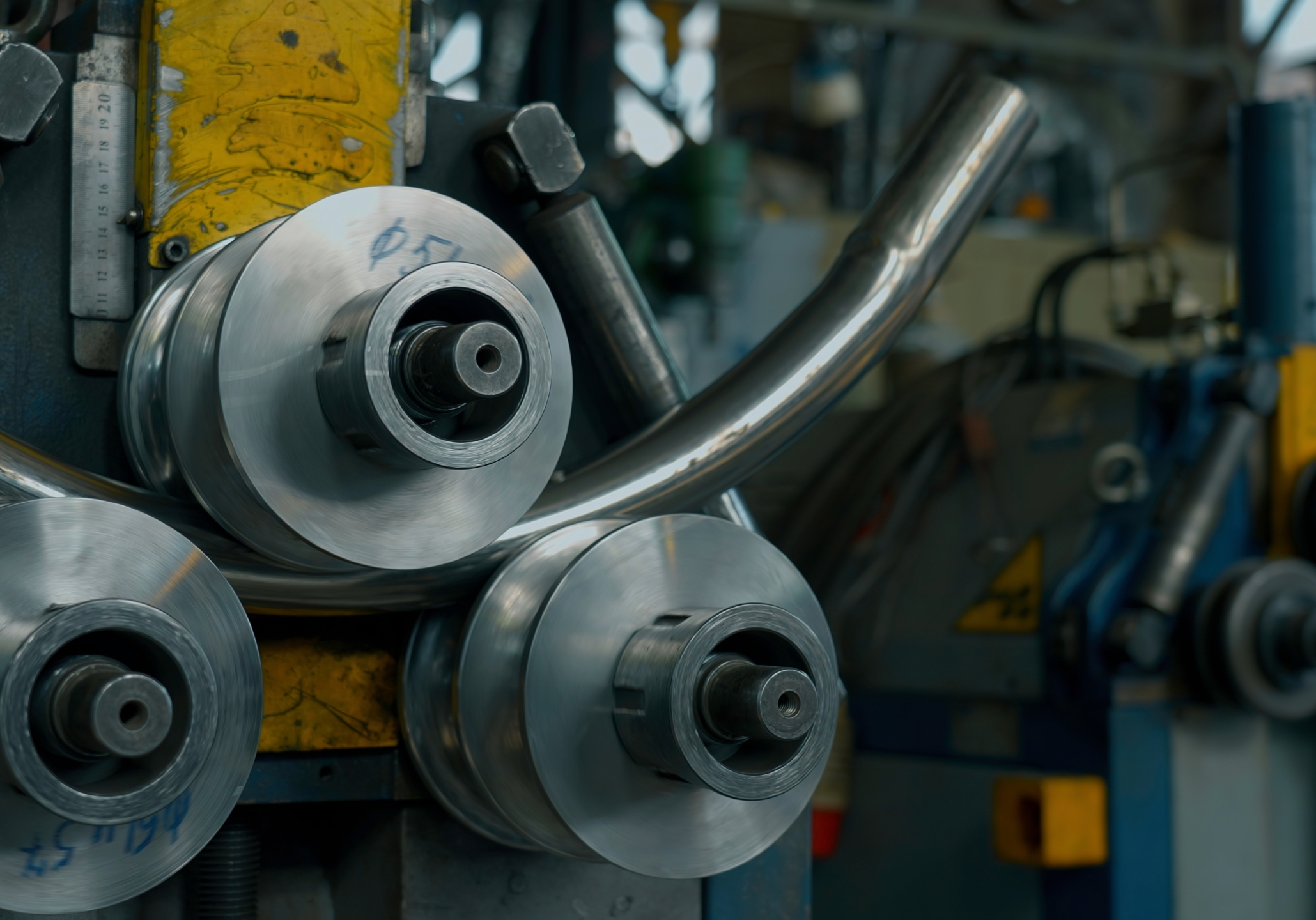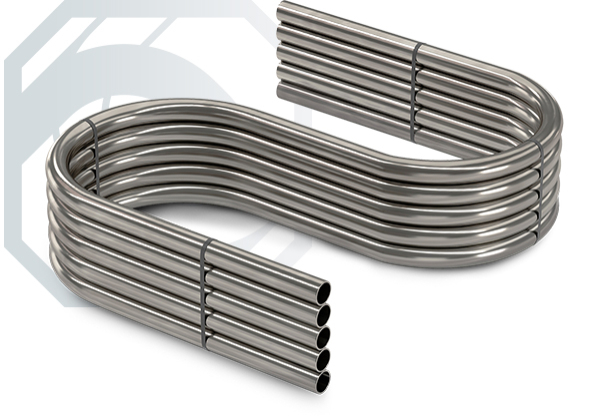Do you need to bend tubes for a project? If so, you may be wondering what type of tube bender is best suited to your needs. In this article, we'll discuss the different types of tube benders to help you make the best choice for your project.
What is CNC Tube Bending?
Tube bending is a metalworking process that involves bending tubes and pipes into various shapes for different fabrication purposes. Here at Link Business, we use CNC technology to assist in our tube bending. This Computer Numerical Control involves utilising a combination of computer programming and automated machinery to accurately and efficiently bend metal.
There are a variety of different tube bender techniques which can be used to fabricate your tubes into different shapes. To understand them, it is useful to first know about the main components of a tube bending machine.
The Main Components of a Tube Bending Machine
Each component of the machine plays an important role in the bending process and must be considered when selecting the right bender for the job.
1. Bend Die
The bend die is an essential component of a tube bending machine. This is a tool (or mold), which allows tubes to be bent around it - this defines the shape of the bent tubes.
There are different types of bend dies available depending on the bending method you are adopting, which will become evident later on when we talk about the different types of tube benders.
2. Clamp Die
The clamp die applies pressure to the tube and the bend die, securing it in place, preventing it from slipping, and helping pull the tube around the bend die.
3. Pressure Die
A pressure die holds the tube against the bend die under pressure. When the tube is fed into the bending machine, the pressure die applies force at the line of tangency (the point where the tube contacts the bend die). This ensures that the tube remains in contact with the bend die during the bending process, allowing for bending at the desired point.
4. Wiper Die
After the clamp and pressure die have secured the tube and the bend dies in place, a wiper die applies pressure to the tube, helping to prevent a hump from forming in the inside radius of the bend. This bending technique is known as push bending and is used to control wall thickness and the inside radius of a tube
5. Mandrel
The mandrel is a rod or shaft that is often used in various ways, depending on the requirements of the tube bending. Its main purpose is to prevent the tube from collapsing and ensuring consistent results. This is often achieved by inserting the mandrel within the tube and then clamping it between the pressure and clamp die.
Types of Tube Bending Technique
Now that we have a better understanding of what tube bending is and how its machines work, let’s explore the different techniques that you could use to fabricate your tubes.
Press Bending
As one of the most common forms of tube bending, press bending works by pressing a bend die against a tube or pipe; which is supported by two fixed supports, forcing it to conform to the desired shape. To achieve this required force, tube benders may use press braking machines to apply force to the tube.
Draw Bending
In this method, the clamping die holds the tube in place, while the pressure die and the radius die rotate around the tube, causing it to bend and take shape. The process is powered by either hydraulic or electric methods.
Roll Bending
Roll bending involves using a series of rollers to push or pull the tube through the rolls while slowly pressing the tubing into the desired bend angle. There are mainly two types of roll bending:
- Three Roll Push Bending (TRPB): This technique involves rotating the tube along its vertical axis, allowing for bends to be formed in different planes.
- Simple Three Roll Bending: This is a basic version of TRPB, which just pushes and bends the tube without the ability to form bends in different planes.
Generally, the tube is pushed through 3 to 4 rollers to achieve the desired bend. e. This technique is useful for creating coils of pipes and truss rod bends.
RAM Bending
This method involves placing a tube on stationary dies called counter dies, which are adjusted to an angle that matches the desired bend angle. From there, a hydraulically driven RAM forces the tube against these counter dies (which may be rollers or pivot blocks), in an attempt to achieve the desired bend.
While RAM is affordable, and one of the oldest tube bending methods, it isn't as precise as other tube bending techniques. As such, it’s better suited for projects that don't require high tolerance levels.
It's a great option for those looking for a quick and easy way to bend tubes.
Mandrel Tube Bending
This is a type of rotary die bending, which involves inserting an internal support bar of a slightly smaller diameter than the workpiece tube. Because rotary bending allows the formation of tighter and exacting radii, this mandrel is necessary to prevent the tube from collapsing during the fabrication process.
Mandrel bending is often used to make exhaust pipes for cars, aerospace equipment and exercise equipment.
Which Tube Bender Technique Should You Choose?
We have explored the main types of tube bending techniques. But which type is right for you?
This will depend on the specifications of your project. Here at Link Business, we provide draw bending and ring rolling, allowing us to fulfil all of your tube bending requirements.
Draw bending is a cost-effective and flexible solution for producing precise bends of varying runs. Similarly, our ring-rolling services are perfect for those projects that require complex bends or shapes, such as bends, cones and rings.
We work with a range of materials, and our machines can bend tubes up to 90mm in diameter and 3.2m in length - with a precision of +-0.2 degrees. Aided by CNC machinery, we can provide a lights-out service to meet tight project deadlines with accuracy and precision. To find out more about our tube bending services, get in touch with a member of our expert team.

